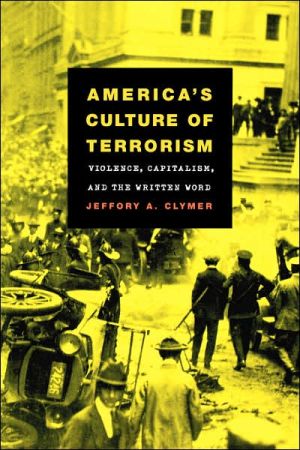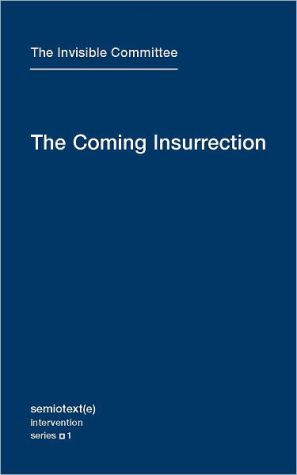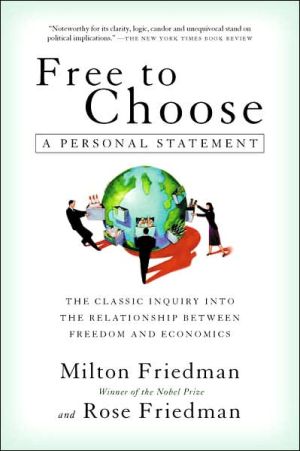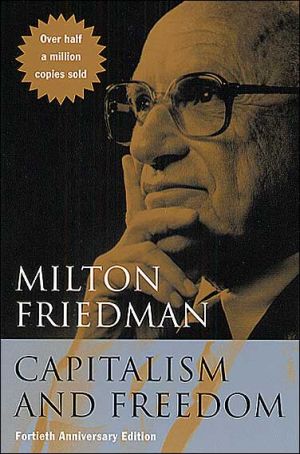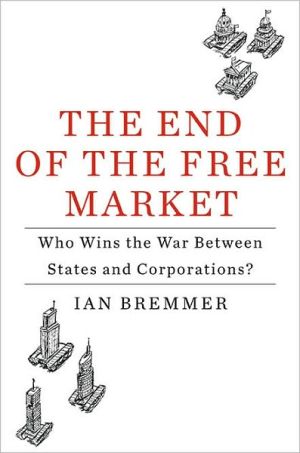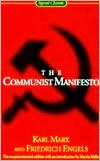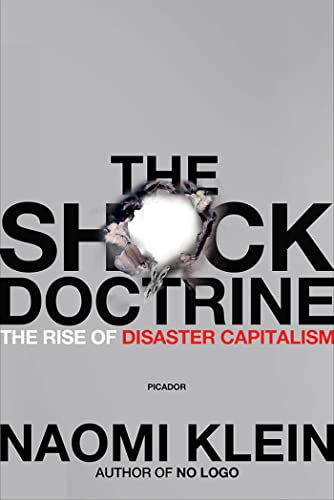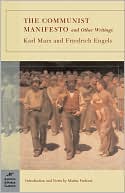America's Culture of Terrorism: Violence, Capitalism, and the Written Word
Although the terrorist attacks of 11 September 2001 shocked the world, America has in fact confronted terrorism for well over a century. With the invention of dynamite in 1866, Americans began to worry about anonymous acts of mass violence in a way that differed from previous generations' fears of urban riots, slave uprisings, and mob violence. Focusing on the volatile period between the 1886 Haymarket bombing and the 1920 bombing outside J. P. Morgan's Wall Street office, Jeffory A. Clymer...
Search in google:
Although the terrorist attacks of 11 September 2001 shocked the world, America has in fact confronted terrorism for well over a century. With the invention of dynamite in 1866, Americans began to worry about anonymous acts of mass violence in a way that differed from previous generations' fears of urban riots, slave uprisings, and mob violence. Focusing on the volatile period between the 1886 Haymarket bombing and the 1920 bombing outside J. P. Morgan's Wall Street office, Jeffory A. Clymer argues that economic and cultural displacements caused by the expansion of industrial capitalism during the period directly influenced evolving ideas about terrorism. In America's Culture of Terrorism, Clymer uncovers the roots of American terrorism and its impact on American identity by exploring the literary works of Henry James, Ida B. Wells, Jack London, Thomas Dixon, and Covington Hall, as well as trial transcripts, media reports, and cultural rhetoric surrounding terrorist acts of the day. He demonstrates that the rise of mass media and the pressures of the industrial wage-labor economy both fueled the development of terrorism and shaped society's response to it. His analysis not only sheds new light on American literature and culture a century ago but also offers insights into the contemporary understanding of terrorism.
America's Culture of Terrorism\ Violence, Capitalism, and the Written Word \ \ By Jeffory A. Clymer \ The University of North Carolina Press\ Copyright © 2003 The University of North Carolina Press\ All right reserved.\ ISBN: 0-8078-2792-4 \ \ \ \ Chapter One\ Imagining Terrorism in America \ The 1886 Chicago Haymarket Bombing\ On 4 May 1886, about 2,000 Chicagoans gathered near Haymarket Square to protest against the city's police, who had shot and killed at least two striking workers outside the McCormick reaper factory on the previous afternoon. The principal speakers at Haymarket that evening lashed out with the inflammatory rhetoric that had been common to Chicago anarchist rallies throughout the 1880s, but the demonstration was generally peaceful. Chicago's mayor, Carter Harrison, was on hand to break up the mass meeting if it threatened to turn violent, but the mayor went home early, confident that the demonstrators posed no threat on that particular night. Later in the evening, a sudden rainstorm kicked up and drove most of the other listeners away, so that only a few hundred people remained when 170 Chicago policemen abruptly arrived and demanded that the protesters disperse. Nonplussed by the anticlimactic arrival of the police at the close of a peaceful, rain-shortened rally, Samuel Fielden, the night's last speaker, pointed out the meeting's nonviolent nature in response to the peremptory dispersal order. At this point in the exchange, someone tossed a dynamite bomb into the police ranks. The explosion immediately killed Officer Mathias Degan, wounded several others, and prompted a cacophony of gunfire, most of it from police pistols. In the chaos, the police shot several of their own officers as well as many of the fleeing civilians. While the number of dead among the police rose to seven over the next few days, the actual number of casualties among the protesters, like the bomb thrower's identity, was never determined.\ In the weeks after the bombing, in a display of police power that brazenly disregarded its victims' constitutional rights, the police rounded up and arrested virtually all known radical sympathizers in the Chicago area. In late May, ten men caught in the police dragnet were indicted by a grand jury, though charges were dropped against one man, William Seliger, in return for his willingness to testify for the state. Another indicted man, Rudolph Schnaubelt, evaded trial by fleeing the country. Court proceedings against the remaining eight men, some of whom were demonstrably not at Haymarket Square at the time of the bombing, and none of whom were identified by credible witnesses, began in June 1886. Unable to prove conclusively who had thrown the bomb, State's Attorney Julius Grinnell proposed that the incendiary language used by the anarchists had brought about the death of the policemen as surely as if one of the accused men had himself hurled the bomb. At best, as Carl Smith has argued, this narrative denied the anarchists' constitutional right to free assembly, and at worst, it "turned sedition into murder and made no distinction between word and deed." Yet on 20 August a jury comprised mostly of men who openly admitted antiradical prejudices handed down eight guilty verdicts as the outcome of a trial beset by paid prosecution witnesses and a judge clearly partial to the state.\ One defendant, Oscar Neebe, was sentenced to fifteen years hard labor, and the other seven men were condemned to hanging. The case then worked its way up through the courts. The decision was upheld by the Illinois Supreme Court, and in November 1887 the U.S. Supreme Court refused to hear the case. Within days of the scheduled execution, however, Governor Richard Oglesby commuted two of the condemned men's sentences to life imprisonment. A third man, Louis Lingg, committed suicide in his cell by biting a fulminating cap. Amidst high tension and tight security, especially around the Chicago Board of Trade, where a retaliatory anarchist dynamite attack was feared, the other four men-Albert Parsons, August Spies, George Engel, and Adolph Fischer-were hanged on the morning of 11 November 1887.\ Prescience, Paranoia, Terrorism\ The Haymarket bomb exploded in an ethnically divided and class-striated city. July 1885, for instance, saw the worst example of what was by then nearly routine police violence, as officers broke up a citywide streetcar strike by ferociously and indiscriminately clubbing bystanders, strikers, and even shopkeepers along the streetcar line. The city had also been a frequent witness to massive labor demonstrations, boisterous workingmen's rifle clubs with militias that regularly drilled and practiced, and large anarchist celebrations, picnics, and holiday revelry. Chicago's anarchist community additionally included a thriving radical press, fraternal halls, singing societies, and other sites of class- and ethnic-based communal gathering. And throughout the years leading up to the Haymarket bombing, the city's radicals had particularly and repeatedly antagonized middle-class Chicagoans with annual fetes that celebrated the 1871 Paris Commune and the 1881 dynamite assassination of Russia's Czar Alexander II as key moments in the working class's economic and political liberation.\ The Haymarket Square bombing thus occurred in an already highly confrontational environment. The blast appeared to culminate the frequent smaller skirmishes between Chicago's most radical workers and factory owners that had taken place since the spontaneous violence of the 1877 railroad strikes had rocked Chicago and many other cities. Indeed, the 1877 strikes had catalyzed Americans to prophesy future violence. Pennsylvania Railroad president Thomas Scott, writing in the staid North American Review, had nervously suggested that "the late troubles may be but the prelude to other manifestations of mob violence, with this added peril, that now, for the first time in American history, has an organized mob learned its power to terrorize the law-abiding citizens of great communities." In 1883 E. L. Molineux, a commander of a New York National Guard regiment, wrote in "Riots in Cities and Their Suppression" that "the mob of the future," the "restless and implacable associations of Socialists, Communist and Nihilists that have taken root in our midst,... sooner or later, must inevitably precipitate a conflict upon us." And in November 1885, only a few short months before the Haymarket bomb exploded, genteel clergyman Lyman Abbott also warned that "communism" and radical labor organizations not only had become "fatally prolific" in America but were both "armed by modern science with fatally efficient equipment for destruction, and officered by leaders often both unscrupulous and daring."\ Abbott's remarks concerning "modern science" refer to Alfred Nobel's 1866 invention of dynamite and express the fear, often exploited by Chicago's labor radicals in the 1880s and seemingly foretold in the glare of Haymarket, that dynamite could entirely rearrange the social order in one spectacular blast by "destroy[ing] in an hour the products of a century's industry." Abbott's worry about the workers' "unscrupulous and daring" leaders also speaks to Scott's enigmatic and seemingly contradictory phrase "organized mob." Scott's curious wording says volumes about mainstream America's nearly palpable fear that the nation's large and amorphous working classes could be channeled or directed into confrontation against its wealthier citizens by demagogues and malcontents. Indeed, John Hay explicitly addressed this concern in his virulently antilabor fictionalization of the 1877 strikes, The Bread-Winners. In Hay's 1883 novel, the forces of law and order ultimately suppress the strike led by socialist Andrew Offitt and his sidekick, Sam Sleeny, a "dark-skinned, unwholesome-looking Bread-winner." With the invention of dynamite, which appeared to promise both anonymity and puissance since a bomb could easily be "carried in a carpet-bag," it seemed to radicals and conservatives alike that a mob's ability, as Scott put it, to "terrorize" others had shaded into a terrorist's more invisible, more powerful, and more dangerous ability to commit specific and deadly acts of mass violence with dynamite bombs.\ When the oft-predicted blast finally happened on that 1886 evening in Chicago, dire warnings such as Scott's, Molineux's, and Abbott's took on the tint of prophetic truth for many and became the foundation of an interpretive framework that imagined the bombing as the inaugural blow in a campaign to overturn the American state. Paranoia thus became prescience, despite the crucial fact that nobody knew who threw the bomb or for what purpose. Indeed, Michael Schaack, a Chicago police captain who led the postbombing roundup of radicals and also wrote the most comprehensive contemporary history of Haymarket, followed these earlier writers' lead in his interpretation of the bombing but offers an additional important gloss on the night's events. Schaack writes that the bombing was committed by a band of immigrant and radical "terrorists" and that it marked the moment when "the crash of dynamite was for the first time heard on the streets of an American city." Technically, Schaack is incorrect here because dynamite had previously appeared on America's streets during moments of class conflict and had even been used in Chicago itself. In December 1885, for instance, the Chicago Tribune reported that an "infernal machine" had been found on a judge's doorstep. But the labeling of Haymarket's unknown bomb thrower as a terrorist who is presumably part of a larger plot updates Scott and Abbott's fears of dynamite and organized mobs precisely by imagining an apparently covert terrorist network operating in America. As the New York Times put it in a front page story the day after the bombing, "Before daylight at least a dozen stalwart men will have laid down their lives as a tribute to the doctrine of Herr Johann Most." With this single sentence, the Times linked the bombing to the most notorious and reviled advocate of terrorism in America during the late nineteenth century.\ In this chapter, I focus on the contemporary understanding of the Haymarket bombing as a terrorist event. It is important to note that Schaack's and other commentators' conception of the tragedy as terrorism did not appear ex nihilo; instead, it was an idea made up of identifiable essentials that fused in the crucible of Haymarket into an emergent notion of modern terrorism in America. For instance, when the bomb exploded, a cultural narrative connecting American labor violence with class uprising and terrorism in Europe, which was partially constructed, if not controlled, by Chicago's radicals themselves, already existed. Beyond this, dynamite's cataclysmic appearance at Haymarket was clearly the most dramatic example up to that time of this relatively new technology's potential for sudden, anonymous, and unanticipated destruction. Finally, a burgeoning mass media and a recurrence of a by-then longstanding American fascination with conspiracies were essential components that parleyed the dynamite blast into a vastly more resonant, widely discussed, and terrifying event. The sudden and cataclysmic violence of dynamite, that is, was made all the more immediate and horrific during the Haymarket events by an emerging mass media's ability to reproduce images, reports, and testimonials again and again for an audience that did not directly experience the bombing, and, through this repetition, to help shape common understandings of the bomb as terrorism.\ Sudden violence such as occurred at Haymarket brings private bodies into a public identity as a spectacle. This is not necessarily different from other catastrophes that stimulated large-scale media coverage in the nineteenth century, such as the Chicago fire or the train wrecks that frequently captivated public attention. Yet violence that is labeled terrorism is different from such natural catastrophes or industrial accidents because its sudden eruption is presumed to be actively planned by some person or persons. As an event whose outcome is known, but whose orchestration remains obscure, terrorism summons forth narratives to reconstruct and explain it. At Haymarket, in a scenario repeatedly played out in events labeled terrorism throughout the twentieth century, a lack of concrete knowledge provoked a surplus of narratives dwelling on conspiracies, secret plans, and covert actions. The bombing's apparently sharp swerve from the norms of political behavior inspired individuals in several different social positions, including the media, the police, the accused, and the state's prosecutors, to imagine incredibly complex and Byzantine conspiracies organized by anonymous plotters. For example, in response to the conspiracy theories implicating them, the men falsely accused of organizing a terroristic cabal against the state even formulated their own conspiracy theory in which state-supported capitalists actively plotted to throw a bomb that could then be blamed on Chicago's radicals. The ubiquity and variety of these purported schemes during the Haymarket events highlight how chimerical conspiracies inevitably seem to emerge after a sudden and unexpected outburst of political violence. Their sheer excess of machination offers compensation for the brute inexplicability of apparently arbitrary mass violence by providing both apocalyptic and airtight explanations.\ Though the men on trial for the Haymarket blast articulated their own version of the tragedy, their voices were overwhelmed by the mainstream print media's raging antipathy. Public discourse after the bombing everywhere encouraged Americans to think of themselves as collectively opposed to radical politics. Crucially, this shaping of events occurred at the same time that a developing print media had expanded the possible forms that mass public gathering around disasters and catastrophes could take. Haymarket, that is, was a formative event in the emergence of what Mark Seltzer has termed this nation's "wound culture"-our collective fascination with wounded, torn, or devastated private bodies and their representations across a wide range of print and visual media. Michael Warner's theorization of a media audience's relationship to spectacles of mass catastrophe since the late nineteenth century can gloss Seltzer's provocative concept. According to Warner, the media makes a transitive form of identification available for its audience. Faced with a disaster occurring somewhere else but made available for consumption by the media's frequent repetitions that dissolve differences of time and space between an event and its belated audience, readers and viewers are convened as a "mass subject" or "noncorporeal mass witness" to a tragedy.\ \ Continues...\ \ \ \ Excerpted from America's Culture of Terrorism by Jeffory A. Clymer Copyright © 2003 by The University of North Carolina Press. Excerpted by permission.\ All rights reserved. No part of this excerpt may be reproduced or reprinted without permission in writing from the publisher.\ Excerpts are provided by Dial-A-Book Inc. solely for the personal use of visitors to this web site. \ \
AcknowledgmentsIntroduction: Terrorism in the American Cultural Imagination11Imagining Terrorism in America: The 1886 Chicago Haymarket Bombing332Gendering the Terrorist: Writing, Class Violence, and Gender in Henry James693The United States of Terrorism: The Political Economy of Lynching and Citizenship in Thomas Dixon and Ida B. Wells1004This Firm of Men-Killers: Jack London and the Incorporation of Terrorism1345Sabotage: Class Antagonism and the Fantasies of Violence171Epilogue: After 9/11211Notes219Works Cited251Index267
